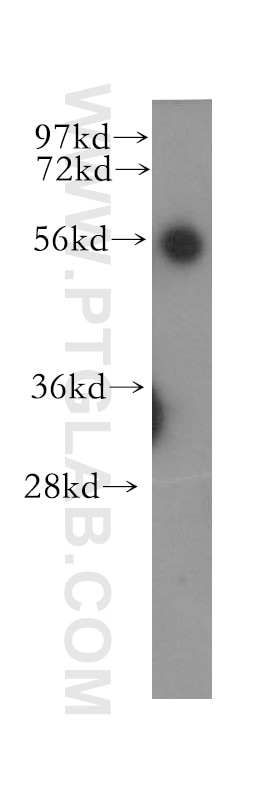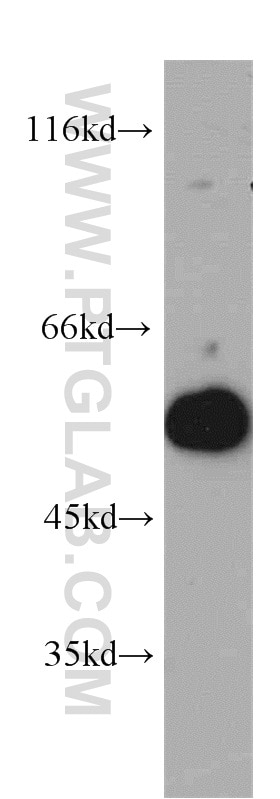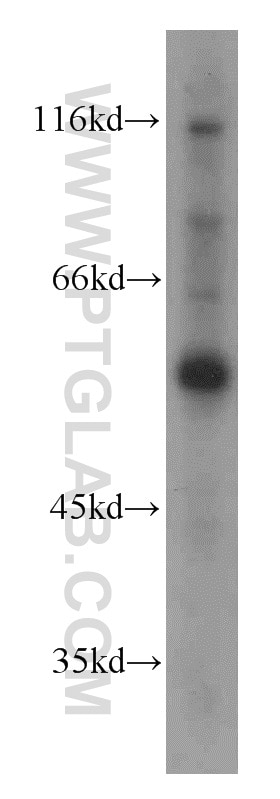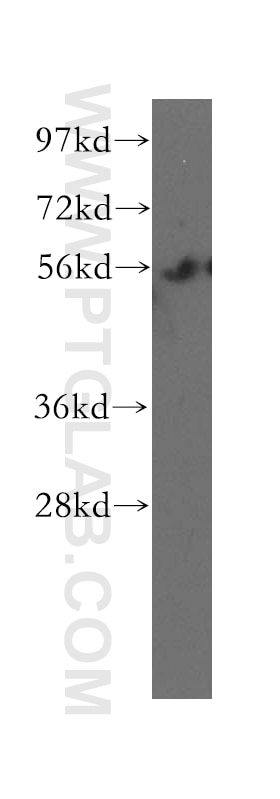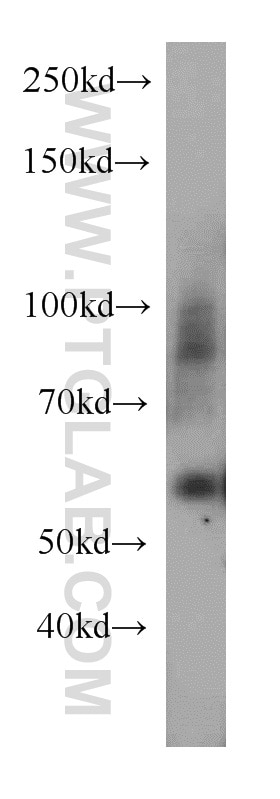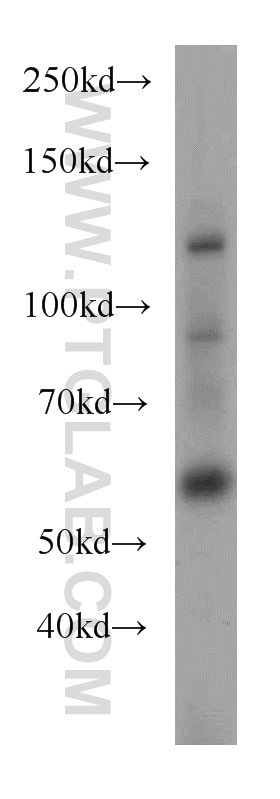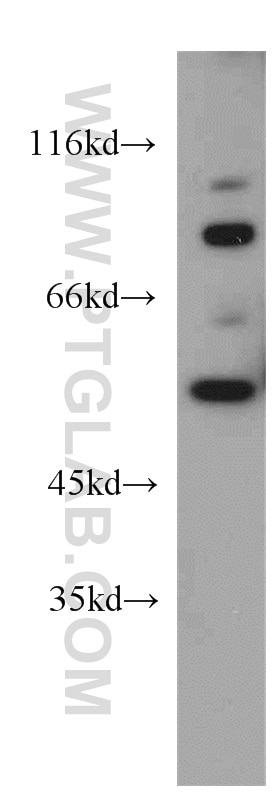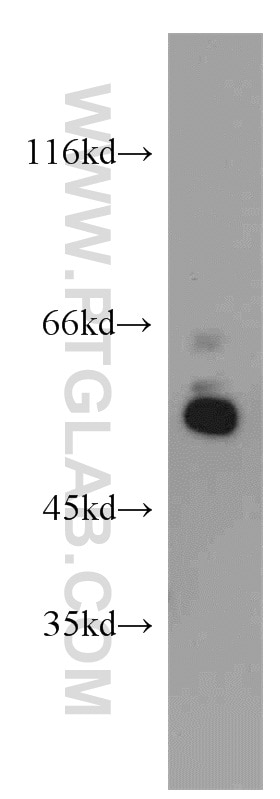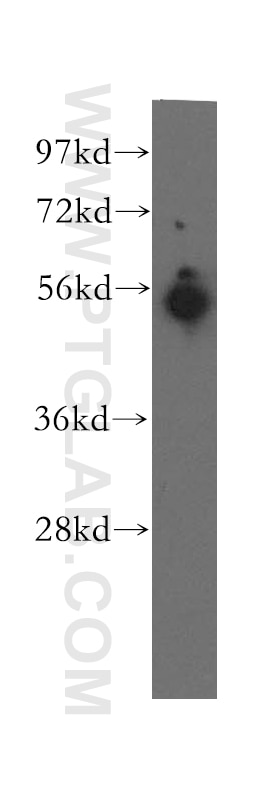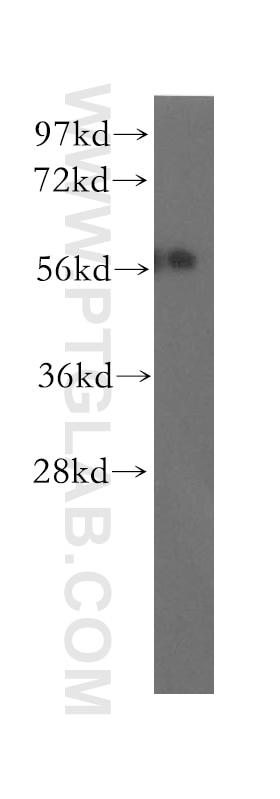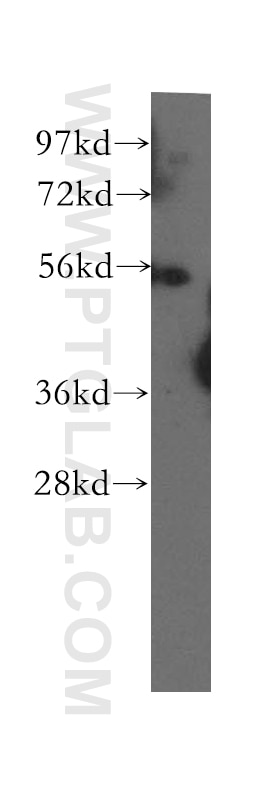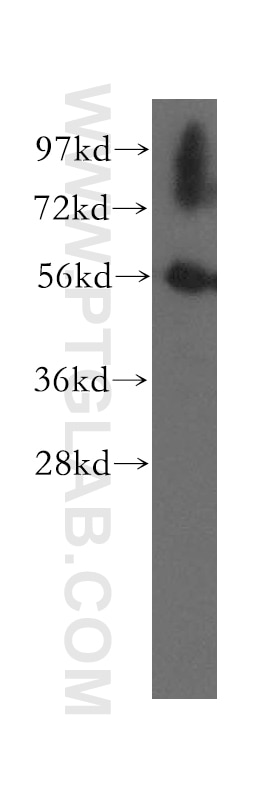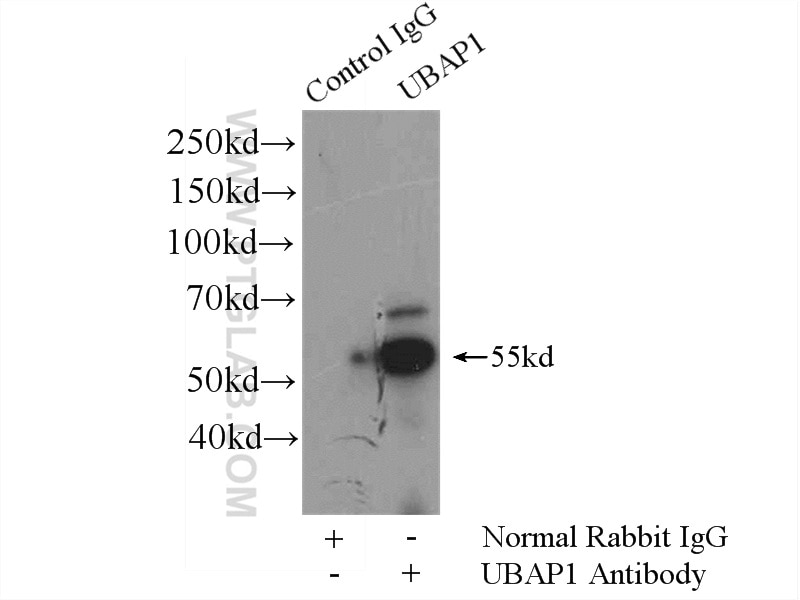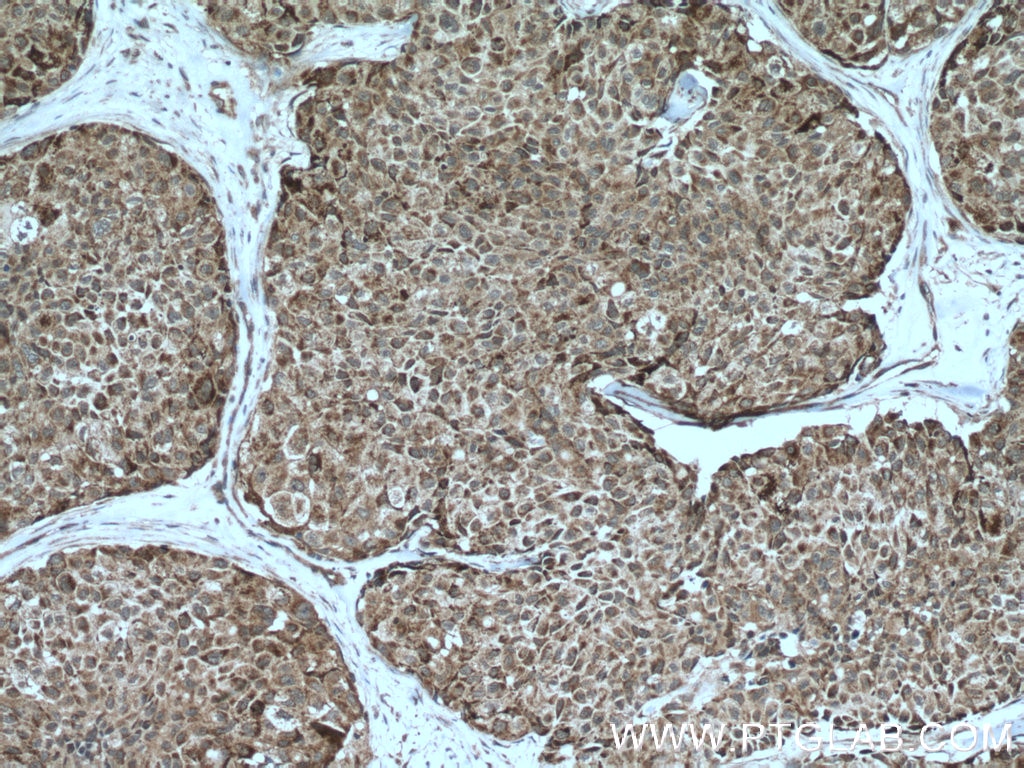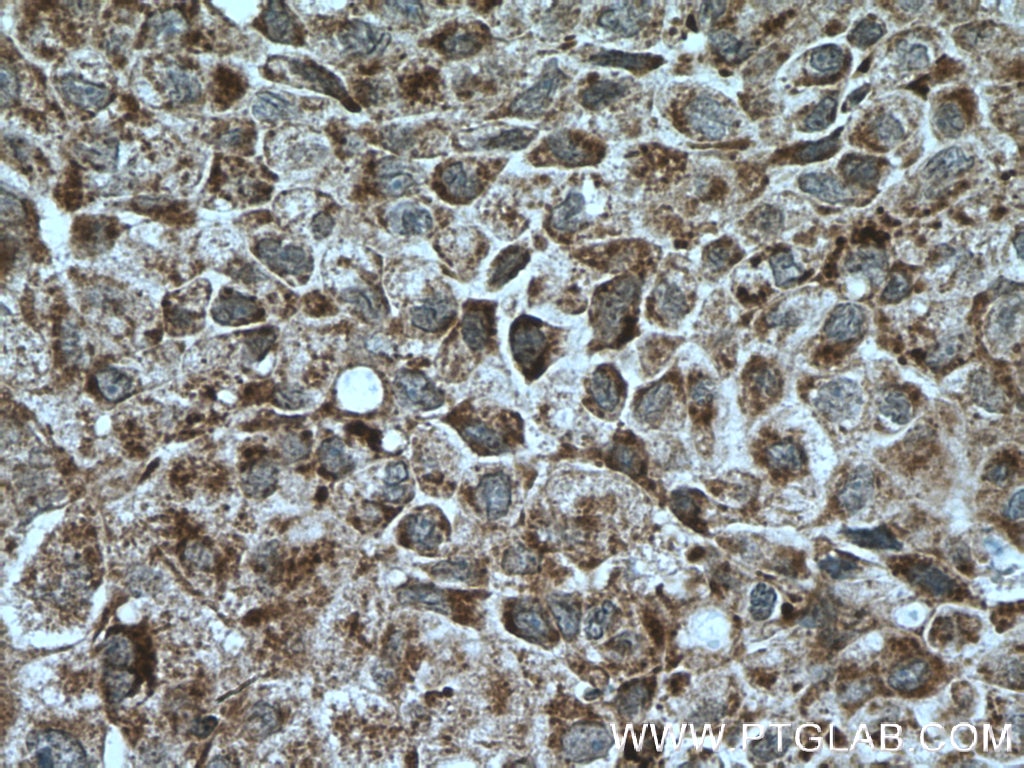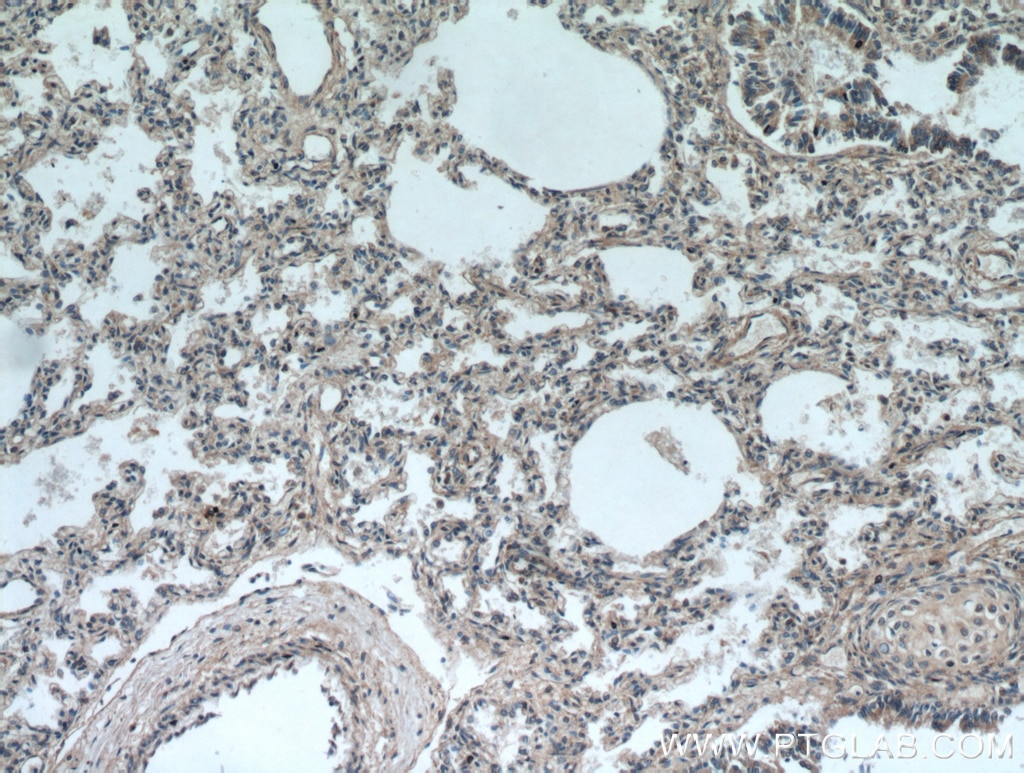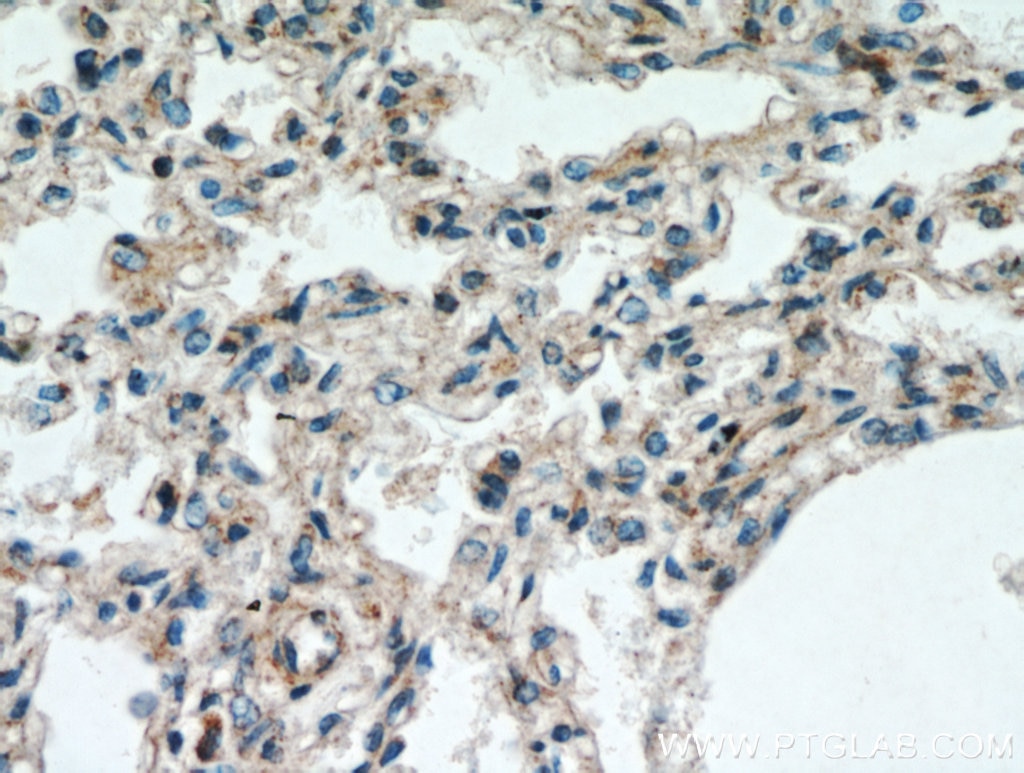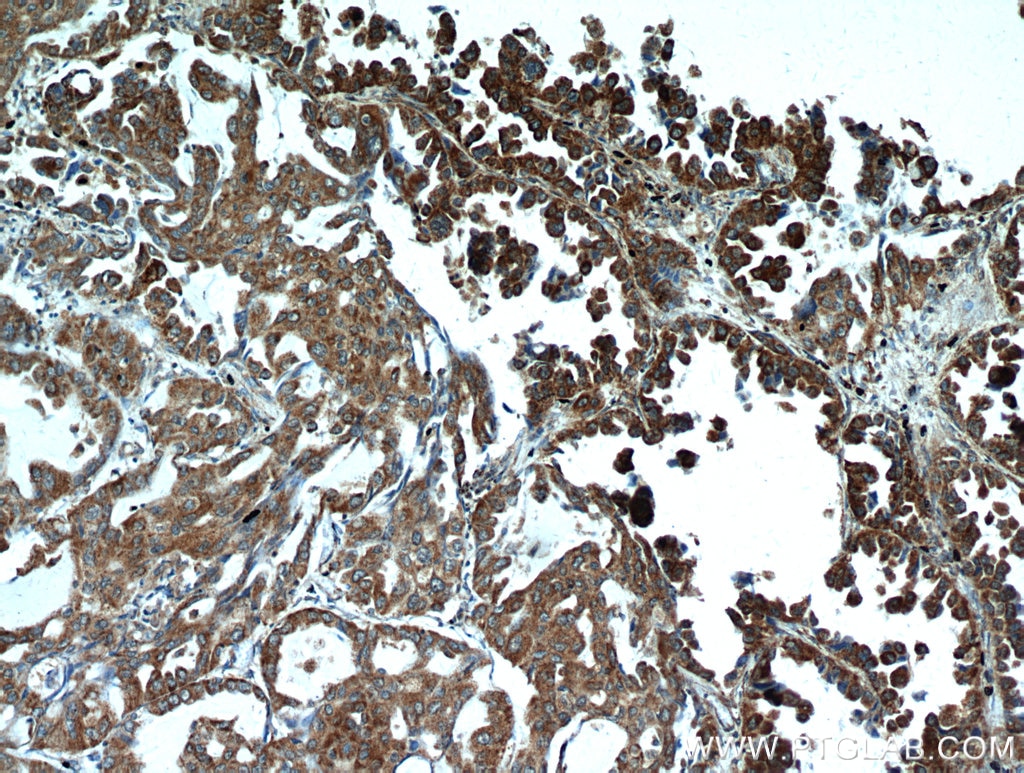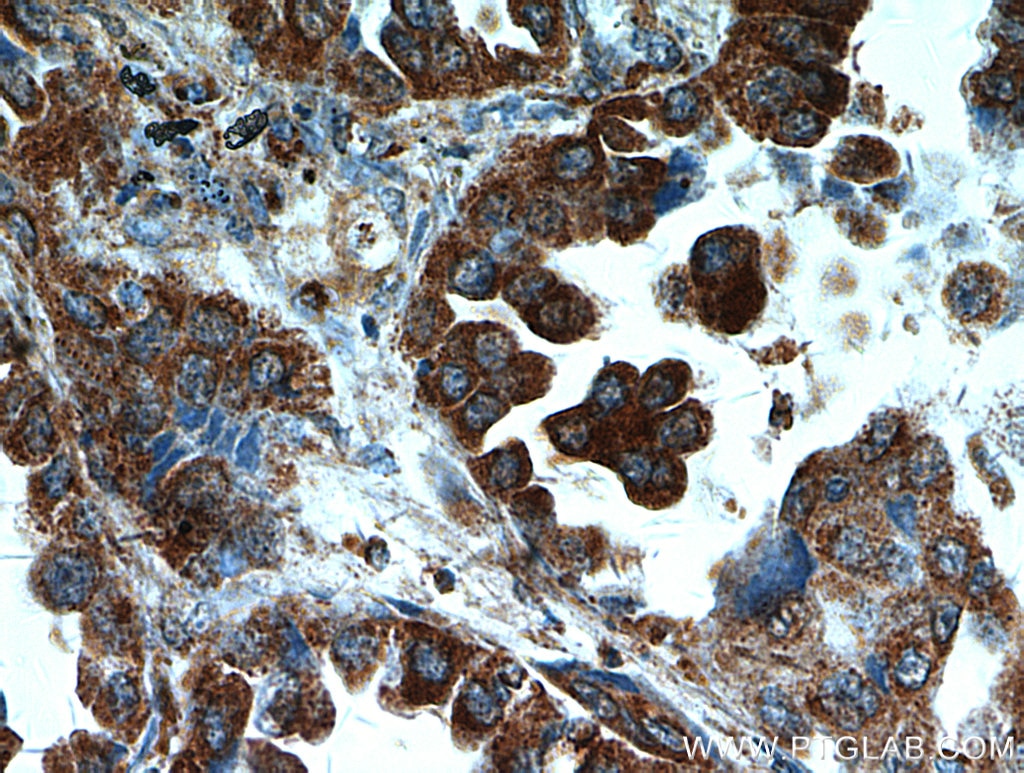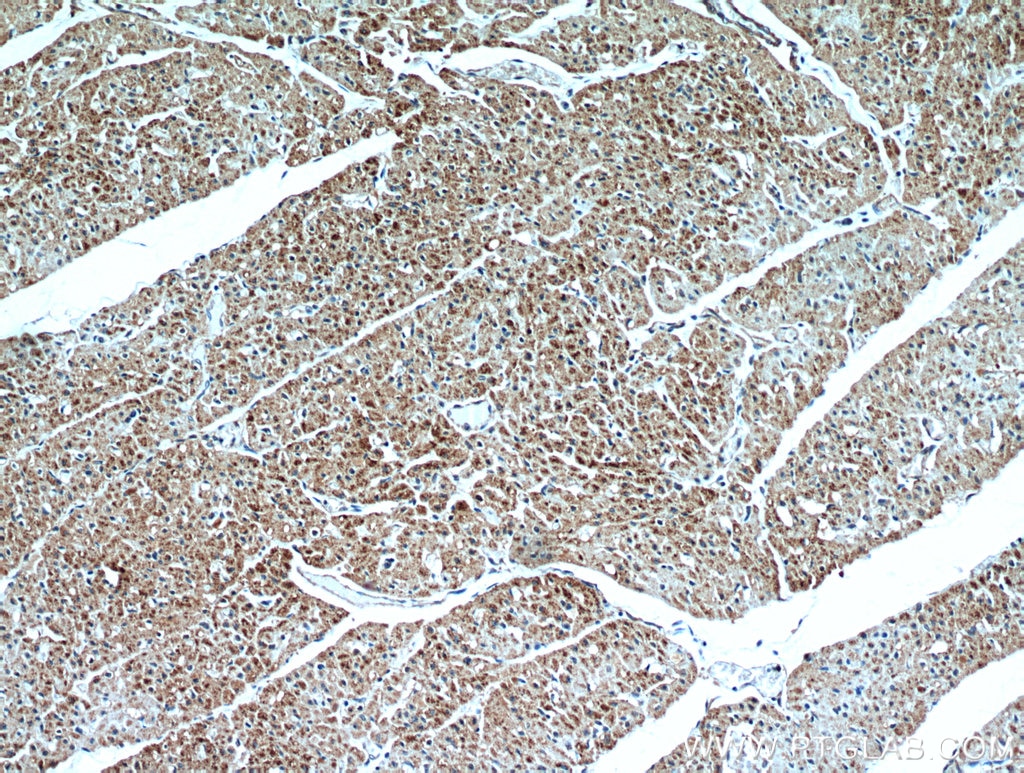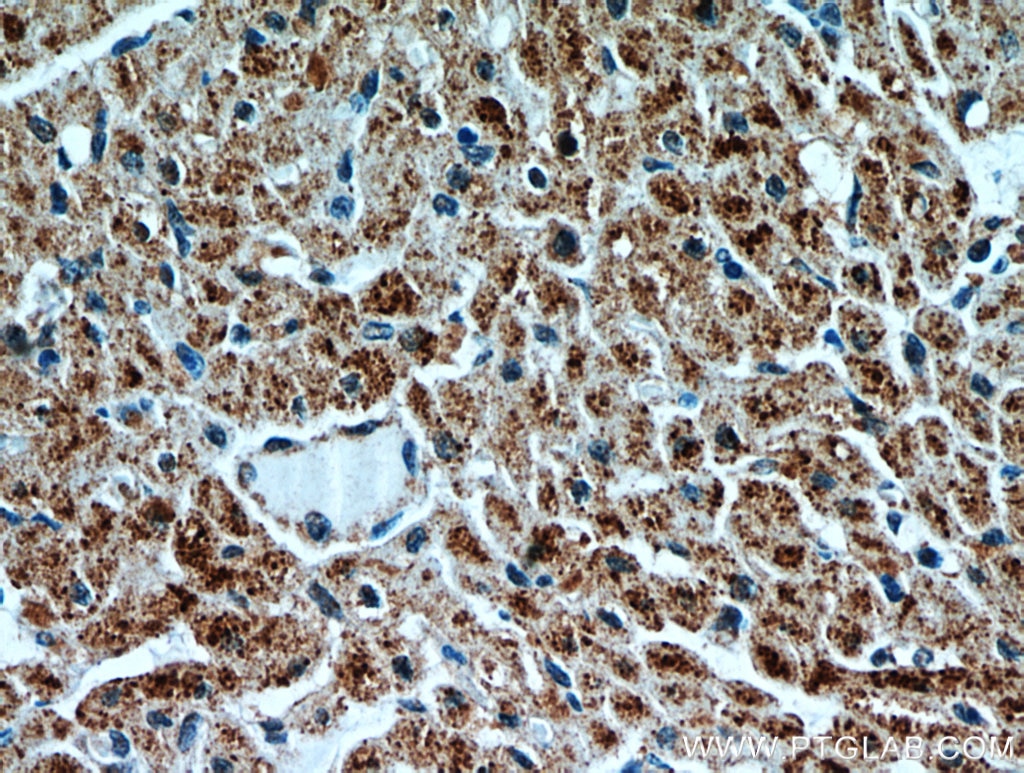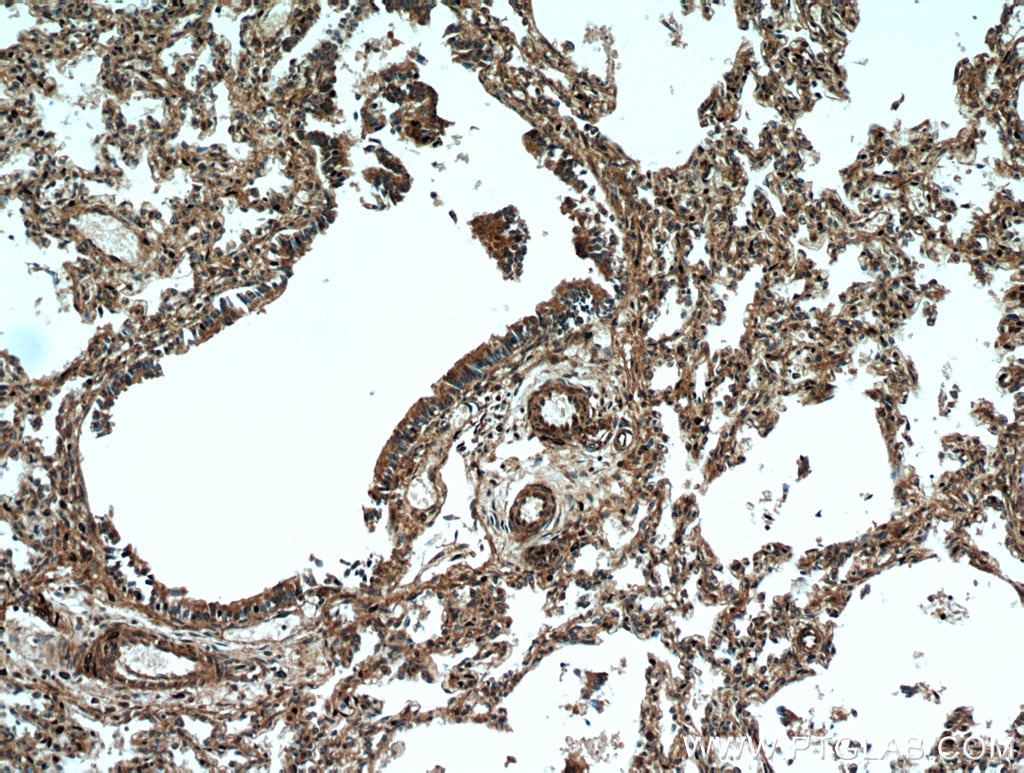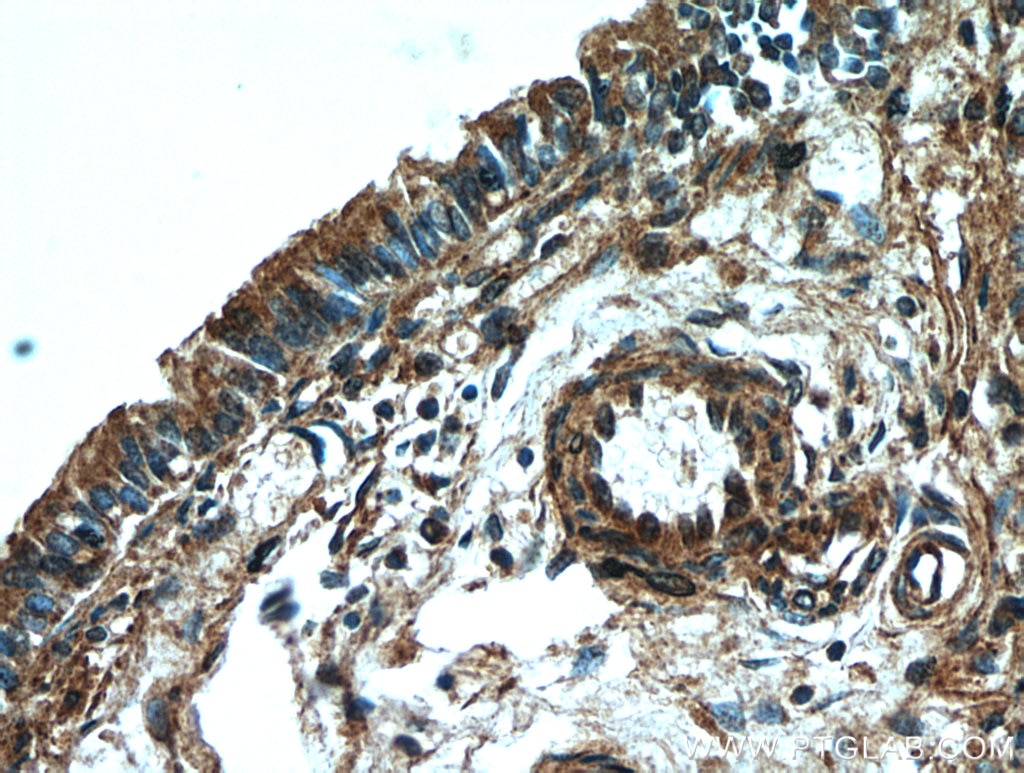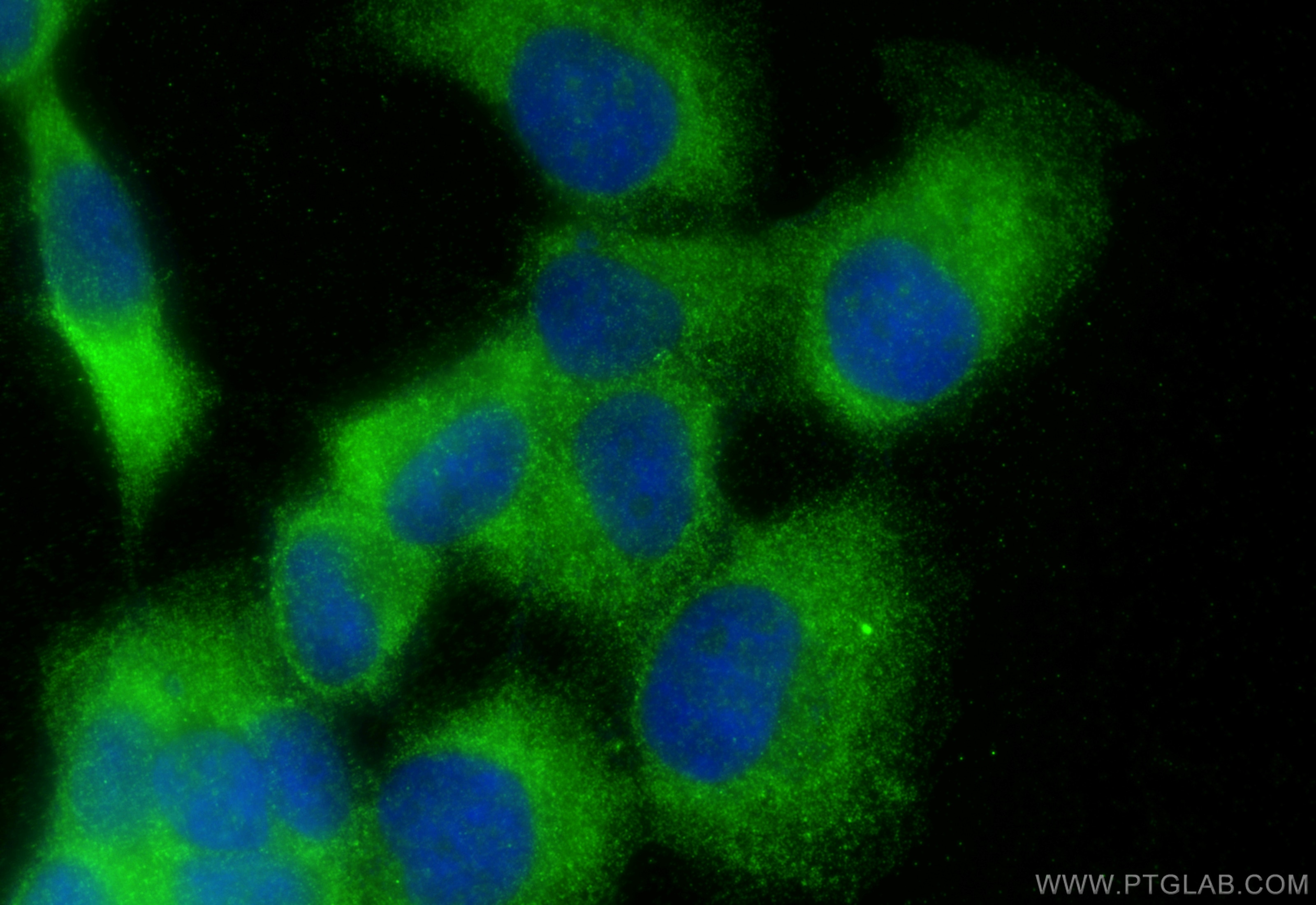Tested Applications
| Positive WB detected in | human heart tissue, A431 cells, human lung tissue, human spleen tissue, human testis tissue, mouse brain tissue, mouse lung tissue, mouse testis tissue, mouse thymus tissue, Y79 cells |
| Positive IP detected in | mouse brain tissue |
| Positive IHC detected in | human lung cancer tissue, human heart tissue, human lung tissue Note: suggested antigen retrieval with TE buffer pH 9.0; (*) Alternatively, antigen retrieval may be performed with citrate buffer pH 6.0 |
| Positive IF/ICC detected in | A431 cells |
Recommended dilution
| Application | Dilution |
|---|---|
| Western Blot (WB) | WB : 1:500-1:2400 |
| Immunoprecipitation (IP) | IP : 0.5-4.0 ug for 1.0-3.0 mg of total protein lysate |
| Immunohistochemistry (IHC) | IHC : 1:50-1:500 |
| Immunofluorescence (IF)/ICC | IF/ICC : 1:50-1:500 |
| It is recommended that this reagent should be titrated in each testing system to obtain optimal results. | |
| Sample-dependent, Check data in validation data gallery. | |
Published Applications
| KD/KO | See 3 publications below |
| WB | See 17 publications below |
| IF | See 1 publications below |
| IP | See 2 publications below |
Product Information
12385-1-AP targets UBAP1 in WB, IHC, IF/ICC, IP, ELISA applications and shows reactivity with human, mouse, rat samples.
| Tested Reactivity | human, mouse, rat |
| Cited Reactivity | human, mouse |
| Host / Isotype | Rabbit / IgG |
| Class | Polyclonal |
| Type | Antibody |
| Immunogen |
CatNo: Ag3055 Product name: Recombinant human UBAP1 protein Source: e coli.-derived, PGEX-4T Tag: GST Domain: 203-502 aa of BC020950 Sequence: GGSGSVLQDEEVLASLERATLDFKPLHKPNGFITLPQLGNCEKMSLSSKVSLPPIPAVSNIKSLSFPKLDSDDSNQKTAKLASTFHSTSCLRNGTFQNSLKPSTQSSASELNGHHTLGLSALNLDSGTEMPALTSSQMPSLSVLSVCTEESSPPNTGPTVTPPNFSVSQVPNMPSCPQAYSELQMLSPSERQCVETVVNMGYSYECVLRAMKKKGENIEQILDYLFAHGQLCEKGFDPLLVEEALEMHQCSEEKMMEFLQLMSKFKEMGFELKDIKEVLLLHNNDQDNALEDLMARAGAS Predict reactive species |
| Full Name | ubiquitin associated protein 1 |
| Calculated Molecular Weight | 502 aa, 55 kDa |
| Observed Molecular Weight | 55 kDa |
| GenBank Accession Number | BC020950 |
| Gene Symbol | UBAP1 |
| Gene ID (NCBI) | 51271 |
| RRID | AB_2211886 |
| Conjugate | Unconjugated |
| Form | Liquid |
| Purification Method | Antigen affinity purification |
| UNIPROT ID | Q9NZ09 |
| Storage Buffer | PBS with 0.02% sodium azide and 50% glycerol, pH 7.3. |
| Storage Conditions | Store at -20°C. Stable for one year after shipment. Aliquoting is unnecessary for -20oC storage. 20ul sizes contain 0.1% BSA. |
Background Information
UBAP1, also named as NAG20, is a 55 kDa protein which contains 2 putative tandem UBA domains at the C terminus, a coiled-coil domain, 2 possible N-glycosylation sites, 5 PKC phosphorylation sites, 7 casein kinase II phosphorylation sites, and 3 N-myristoylation sites. UBAP1 might be a potential effective diagnosis candidate for NPC and decreased expression of UBAP1 protein is a possible point of dysfunction along the pathogenesis pathway for NPC that may contribute to malignant transformation.
Protocols
| Product Specific Protocols | |
|---|---|
| IF protocol for UBAP1 antibody 12385-1-AP | Download protocol |
| IHC protocol for UBAP1 antibody 12385-1-AP | Download protocol |
| IP protocol for UBAP1 antibody 12385-1-AP | Download protocol |
| WB protocol for UBAP1 antibody 12385-1-AP | Download protocol |
| Standard Protocols | |
|---|---|
| Click here to view our Standard Protocols |
Publications
| Species | Application | Title |
|---|---|---|
EMBO J A Pseudomonas aeruginosa TIR effector mediates immune evasion by targeting UBAP1 and TLR adaptors. | ||
Curr Biol UBAP1 is a component of an endosome-specific ESCRT-I complex that is essential for MVB sorting. | ||
Cell Rep ESCRT-I protein UBAP1 controls ventricular expansion and cortical neurogenesis via modulating adherens junctions of radial glial cells | ||
Cell Rep The Dynamics of TGF-β Signaling Are Dictated by Receptor Trafficking via the ESCRT Machinery. | ||
Cell Rep Interplay of Endosomal pH and Ligand Occupancy in Integrin α5β1 Ubiquitination, Endocytic Sorting, and Cell Migration. |

